Last year, game designer Greg Carslaw wrote a post for us that was hugely popular so when he asked if he could come back, I jumped at the chance.
For those that don't know Greg is a UK designer with a project on Kickstarter right now for his new game Wizards Academy, a hugely replayable co-op game with a fantasy magic theme. We interviewed Greg about the game last year at the UK Games Expo and you can check out that video at the bottom of the article. But for now, here’s Greg.
Character Design in Wizard's Academy
I have a confession to make: I have never asked any other games designer or author how it is that they generate their characters. My approach is cobbled together out of “Things that seemed like a good idea at the time” and “Things that seem to work”. So I find it faintly embarrassing that people compliment the variety in character designs for Wizard’s Academy. Given that it’s being launched this week now seemed like an excellent time to talk about where these characters actually come from.
During prototyping I like to adopt a “fail faster” approach, if I’ve got an idea I want to get it into a playable prototype ASAP so that I can dig into the nuts and bolts of whether it works or not. This meant that my initial characters were driven by two things: The mechanic that I wanted to test and the resources I could get as quickly as humanly possible.
Since I work for an art company I’ve got access to a pretty impressive gallery, these are images submitted by artists looking to get more exposure for their 3D work. When I’m prototyping a character I do a quick scan of the gallery, pull the first thing that looks vaguely appropriate and throw it into the prototype. So the first generation of characters were literally an image picked “because it was cool” combined with a mechanic picked “because I want to test this one”.
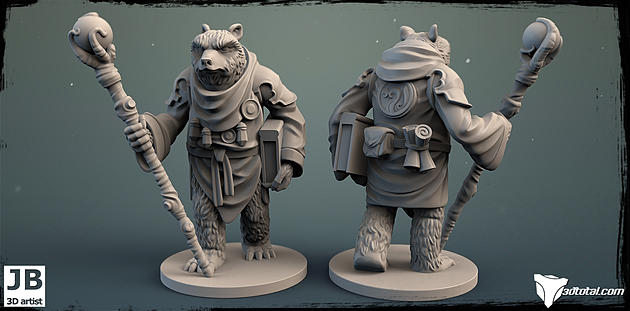
If traits gained at this stage of their development work well in playtesting then they tend to stick around through subsequent tests. It is almost pure chance that “Enhancement specialist” combined with “Anthropomorphic Bear” to get me to a character that’s accidently turned herself into a bear in pursuit of physical perfection, but those parts of the character survived dozens of iterations of testing and so find themselves in the final game.
As playtesting leads to changes in mechanics, the new mechanics added to characters wind up being warped around their (almost accidental) flavour. Once playtesters started complaining that the specialist school wasn’t quite enough to make the characters feel different to each other and I made the decision to give each character a special ability, some of these abilities flowed from the flavour. Nyvetta gained the ability to rend imps in half with her claws (This ability did not survive subsequent iterations of the game but that’s another story). At this point I’m having mechanical decisions influenced by flavour that was chosen almost at random in order to construct a prototype quickly!
In other cases the addition of special abilities was taken to be an opportunity to develop the character. When GMing roleplaying games, if I get surprised by players going to an NPC I didn’t expect, I adopt a simple trick to make simple characters seem more three dimensional: Give a character a trait and then give them some circumstances in which they contradict that trait. For instance a second in command who’s generally loyal and reliable but struggles with alcoholism. Or a space captain who’s a bit of a rogue, but who is always there for his crew no matter what. I’m pretty sure I’m not the only person using this trick.
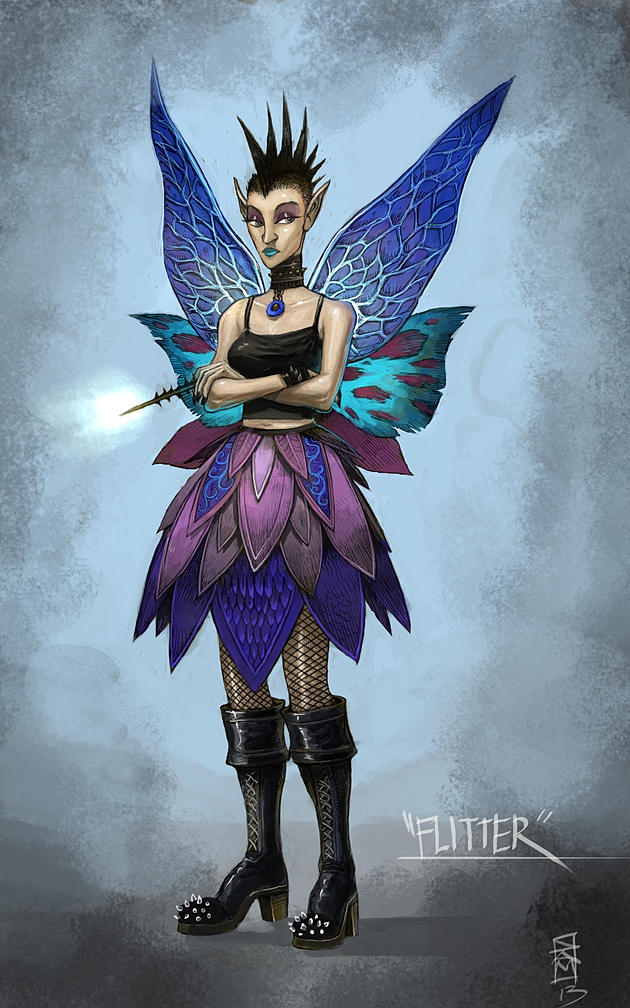
So in the case of Flitter, who’d been declared “A bit boring”, who was at that point simply “A magical fairy” I expanded her background to give her a motivation to be in the academy. She’s here to steal items imbued with black magic to sell on through her arms dealer contacts. Mechanically this meant an ability allowing her to wield two staves and in terms of her flavour it made her a more compelling character. It’s hard to talk about the extent to which these decisions are mechanically driven and to what extent they’re flavour driven – every time I added an ability both considerations where important. I was constantly asking “What’s roughly balanced to the other characters in power level, but fun to do and says something about the character with the ability?”
At this point I’d been developing and testing for nearly a year and had a collection of perhaps two dozen characters. I knew that we only had the budget for six in the core game (It costs us about $1000 to get a character into the game, in terms of generating all of the necessary art and graphic design) so had to make some tough choices. In the end I wound up needing to pick characters with less specialised powers, to make the core game work, though I still hope to add the others through stretch goals. Having made these decisions it was time to hire an artist: Enter Sean Andrew Murray.
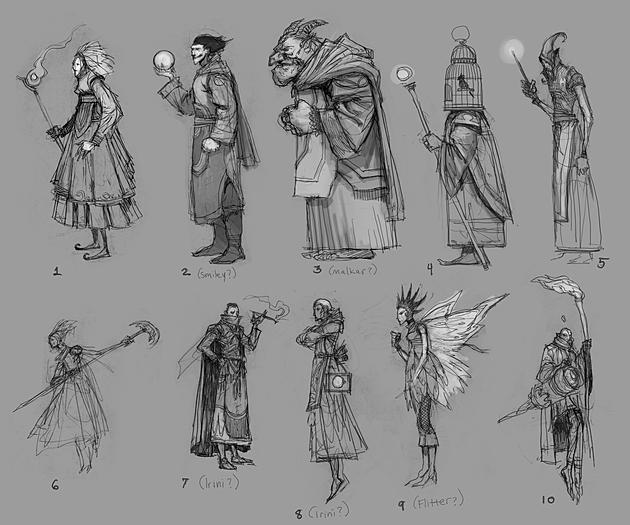
Sean has a spark of genius when it comes to character design and really started pushing my characters forward. When working with artists I always try to break down what I’m looking for into a list of “These are attributes I must have” and “These are attributes that I think are good, but feel free to ditch them if you’re inspired” – my view is that as a non-artist there’s no point in hiring someone excellent if you’re planning to straight jacket them into the limitations of your imagination. So Sean started showing me sketches for different ways in which he might realise my characters.
Once again this warped some of them completely and Sean didn’t hold back in showing us new ideas if he came up with something cool. To this day I wish we’d been able to use his sketch of the wizard who had a caged canary where their head should be (Though I still don’t think that we could make the model look right – it was the right call). The stronger characters stayed true to my earlier vision, where others changed completely.
Klicks was relatively ill defined as “Some sort of insect thing”. The name was supposed to be onomatopoeic of the way his species communicates, but it hadn’t been what had carried the character through the previous rounds of playtesting. Really it was his special ability (Whenever you cast a spell you can cast it for free if you set fire to the room that you’re in) that had carried him this far. So when the character was totally reinvented and drawn with a really neat plague mask I loved it and that was carried forwards into the final game. His text gives the implication that he’s from a culture that burns a lot of things to prevent the spread of disease, but I’m not sure if it’s too subtle, I’ll probably keep writing and rewriting the snippets about the characters right up until the files go to the manufacturers.
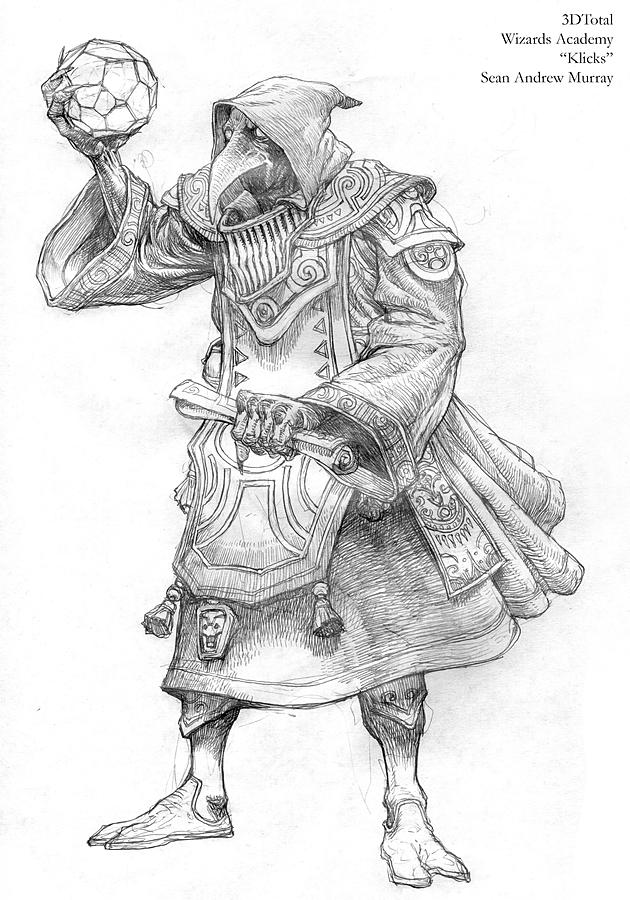
So that’s the process that’s generated my characters over the past few years. Accidental choices for quick prototyping, generating mechanics, generating flavour, warped by new mechanics, warped by new flavour and eventually winding up with a collection of wizards that we’re proud to call our own.
I think that perhaps the secret to generating interesting characters – if such a thing exists – comes down to two things: The first is a willingness to have flavour and mechanics feed into each other, adapting one as the other makes demands and alternating which has primacy in a given decision until characters successfully blend both. The second is an openness to new ideas, finding ways to be accepting of ideas generated by artists or playtesters that are a bit out of left field but that could help to create something that stands apart from cookie cutter templates.
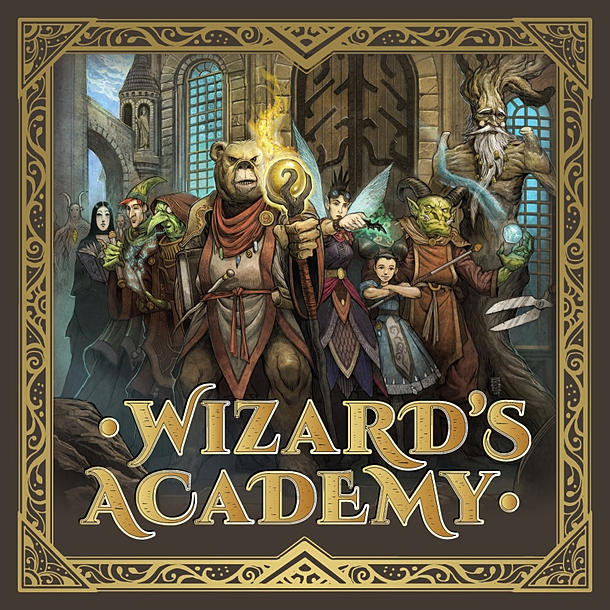
Wizard’s Academy is live on Kickstarter now and is a cooperative game for 2-6 players about magical experimentation. The characters are cool, but the big thing that’s got reviewers hooked is the magic system. The effects of each combination of glyphs are randomised at the start of each game and hidden until you cast them. You can alter almost anything about the game, but you’re initially hindered by your ignorance as to what your powers do and as the game progresses you’re instead hindered by all of the imps, trolls, demons, fire and water (and more!) that you’ve summoned in your reckless experimentation.
Thanks Greg. And now as promised, Steve Tudor from Polyhedron Collider interviews Greg about Wizard’s Academy.
Comments
Post a Comment